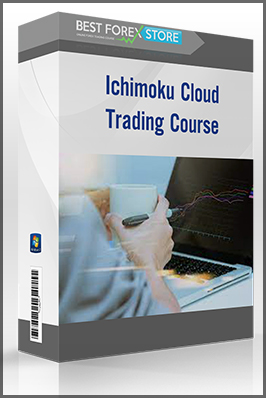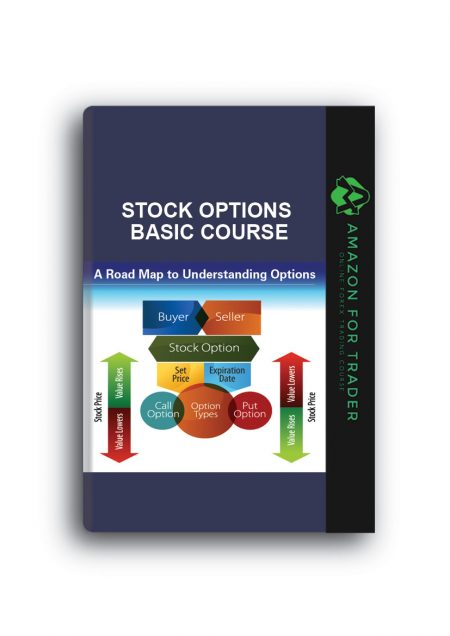Louis Mendelsohn – Intermarket Analysis of the Forex Markets
Louis Mendelsohn – Intermarket Analysis of the Forex Markets
Size: 519 KB Louis Mendelsohn – Intermarket Analysis of the Forex Markets
Written by: Louis B. Mendelsohn
Foreword by Darrell Jobman
Most traders stress the role of fundamental information and historical single-market price data in analyzing markets for the purpose of price and trend forecasting. Traders do need to look back at past price action to put current price action in perspective, but they also need to look forward to anticipate what will happen to prices if their analysis is to pay off in the real trading world.
To be able to look ahead with confidence, however, traders need to look in one other direction, and that is sideways to what is happening in related markets, which has a major influence on price action in a target market. What are the external market forces that affect the internal market dynamics – the intermarket context or environment in which the market you are trading exists?
Moving beyond single-market analysis Louis Mendelsohn – Intermarket Analysis of the Forex Markets
Intuitively, traders know that markets are interrelated and that a development that affects one market is likely to have repercussions in other markets. No market is isolated in today’s global financial system. However, technical analysis has traditionally emphasized single-market analysis, focusing on one chart at a time and failing to keep up with structural changes that have occurred in financial markets as the global economy has emerged with advances in telecommunications and increasing internationalization of business and commerce.
Many individual traders still rely upon the same types of mass-marketed, single-market analysis tools and information sources that have been around since the 1970s when I first started in this industry. And a large percentage of traders continue to end up losing their trading capital. If you’re still doing what the masses are doing, isn’t it likely that you’ll end up losing your hard-earned money, too?
Louis Mendelsohn – Intermarket Analysis of the Forex Markets
In the forex markets especially, you cannot ignore the broader intermarket context affecting the market that you are trading. You still need to analyze the behavior of each individual market to see the double tops or broken trendlines or indicator crossovers that so many other traders are following because that’s part of the mass psychology that drives price action. However, it is increasingly important that you factor into your analysis the external intermarket forces that influence each market being traded.
Louis Mendelsohn – Intermarket Analysis of the Forex Markets
Historical roots
Intermarket analysis is certainly not a new development for traders, having roots in both the equities and commodities markets. You are probably familiar with equities traders who compare returns between small-caps and big-caps, one market sector versus another, a sector against a broad market index, one stock against another, international stocks versus domestic stocks. Portfolio managers talk about diversification as they try to achieve the best performance. Whether they are speculating for profits or arbitraging to take advantage of temporary price discrepancies, intermarket analysis in this sense has been part of equities trading for a long time.
Traders in the commodities markets have also been into intermarket analysis for a long time, trading spreads that have a reliable track record. Farmers have been involved in intermarket analysis for years although they may not have thought of what they do in those terms. When they calculate what to plant in fields where they have several crop choices – between corn and soybeans, for example – they typically consider current or anticipated prices of each crop, the size of the yield they can expect from each crop and the cost of production in making their decision. They do not look at one market in isolation but know that what they decide for one crop will likely have a bearing on the price of the other, keeping the price ratio between the two crops somewhat in line on an historical basis.
Louis Mendelsohn – Intermarket Analysis of the Forex Markets
The price relationships of corn to soybeans or hogs to cattle or gold to silver or T-bonds to T-notes have been the subject of intra-commodity and inter-commodity spread analysis and have been an integral part of technical analysis of the commodities markets for decades, long before John Murphy and I brought the term “intermarket analysis” into vogue.
Louis Mendelsohn – Intermarket Analysis of the Forex Markets
The commodities markets, in turn, have a tremendous effect on the financial markets such as Treasury notes and bonds, which have a powerful effect on the equities markets, which have an effect on the value of the U.S. dollar and forex markets, which has an effect on commodities . . . The ripple effect through all markets is sort of a circular cause-and-effect dynamic involving inflationary expectations, changes in interest rates, corporate earnings growth rates, stock prices, forex fluctuations. You can hardly name a market that isn’t affected by other markets or, in turn, doesn’t affect other markets. Whatever the market, assets tend to migrate toward the one producing or promising the highest return. That’s as true for forex as any other market.
You have probably heard the expression, “If the U.S. economy sneezes, the rest of the world catches cold” or that the health of the U.S. economy is the engine that drives the global economy. It works both ways as a sneeze elsewhere in the world can have a significant impact on U.S. markets, as was evident in the Asian financial crisis in 1997 and other incidences over the years that have provided proof, if any was still needed, of how linked today’s global markets are.
Intermarket analysis: The next logical step
So, a quantitative approach to implement intermarket analysis, which has been the basis of my research since the mid-1980s, is neither a radical departure from traditional single market technical analysis nor an attempt to undermine it or replace it. Intermarket analysis, in my opinion, is just the next logical developmental stage in the evolution of technical analysis, given the global context of today’s interdependent economies and financial markets.
Bottom line: If you want to trade forex markets today, you have to use a trading tool or adopt an approach or trading strategy that incorporates intermarket analysis in one way or another. An important aspect of my ongoing research involves analyzing which markets have the most influence on each other and determining the degree of influence these markets have on one another.
Louis Mendelsohn – Intermarket Analysis of the Forex Markets
HurricaneomicSM analysis is a perfect example of the inter-connectedness of events and markets and how nothing can be looked at in isolation. Take the spate of hurricanes that hit the Gulf Coast and Florida in 2005. They did not simply cause local damage to the economy of those regions. On the contrary, there are hurricaneomic effects that will ripple throughout the world economy for months and years to come, impacting the energy markets, agricultural markets, building materials including lumber, the federal deficit, interest rates, and, of course, the forex market as it pertains to the U.S. dollar. So, hurricaneomic analysis goes hand-in-hand with intermarket analysis in looking at events such as natural disasters and their effects on the global financial markets.
Get Download Links For Membership
[center][b][color=red]You are not VIP Member[/color][/b]
[i]Please contact Skype or Gmail for VIP membership and be able to download this item.[/i][/center]


 ICHIMOKU CLOUD TRADING COURSE - FOLLOWMETRADES
ICHIMOKU CLOUD TRADING COURSE - FOLLOWMETRADES STOCK OPTIONS BASICS COURSE - Follow Me Trades
STOCK OPTIONS BASICS COURSE - Follow Me Trades ACADEMY - TRADING COURSES BUNDLE
ACADEMY - TRADING COURSES BUNDLE





